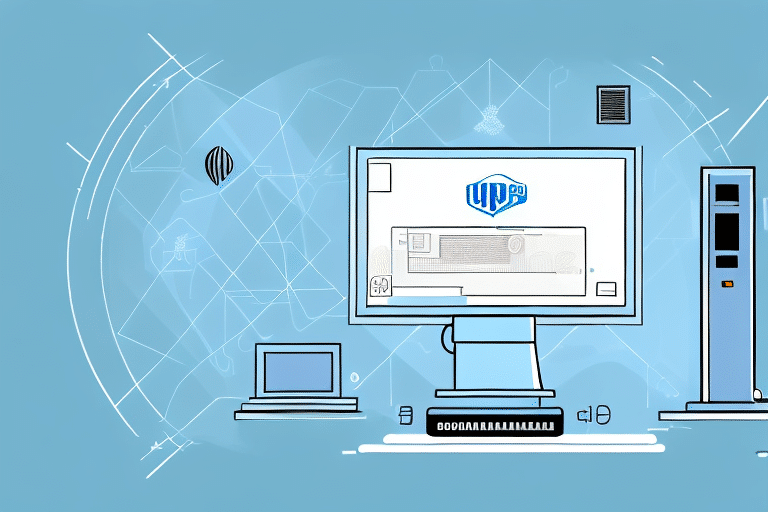How to Connect, Optimize, and Manage UPS for Kashoo
Ensuring an uninterrupted power supply is crucial for your Kashoo business operations. A UPS (Uninterruptible Power Supply) is the ideal solution to safeguard your accounting software and data. This comprehensive guide covers everything you need to know about optimizing, managing, and connecting your UPS to Kashoo, whether you are a small business owner or part of a large enterprise.
Understanding UPS and Its Importance for Kashoo
What is a UPS?
A UPS is a device that provides backup power to your computer and other electronic equipment during power outages. It ensures your important data remains safe by maintaining a continuous power supply. For Kashoo, a cloud-based accounting software, this means your financial data remains accessible and secure even during unexpected power interruptions.
Benefits of Using a UPS
- Data Protection: Prevents data loss and ensures smooth operations during outages.
- Equipment Safety: Protects against power surges and voltage fluctuations that can damage hardware.
- Operational Continuity: Keeps your business running without disruption, maintaining productivity.
According to a report by Statista, data downtime can cost businesses thousands of dollars per minute, highlighting the critical need for reliable UPS systems.
Selecting the Right UPS for Your Kashoo Setup
Factors to Consider
- Business Size: Determine the scale based on the number of devices and power requirements.
- Backup Runtime: Ensure the UPS provides sufficient backup time, typically 10-15 minutes, to save data and safely shut down systems.
- Type of UPS:
- Standby
- Line-Interactive
- Online
- Surge Protection: Look for UPS models with robust surge protection and voltage regulation features.
Top UPS Brands
Popular UPS brands include APC, CyberPower, and Eaton. These brands are renowned for their reliability and comprehensive customer support.
Connecting Your UPS to Kashoo: A Step-by-Step Guide
- Unpack and Charge: Ensure your UPS is fully charged and all necessary cables are included.
- Connect Devices: Use the provided USB or Ethernet cable to connect the UPS to your computer or server.
- Install Software: Follow the manufacturer’s instructions to install any required software or drivers.
- Configure Settings: Adjust the UPS settings to match your specific needs, such as shutdown procedures and alert notifications.
- Test the System: Simulate a power outage to ensure the UPS functions correctly and maintains your Kashoo operations.
For detailed installation instructions, refer to the manufacturer’s guide or visit their official support page.
Optimizing UPS Settings for Maximum Efficiency
Adjusting Standby Time and Battery Life
Set the standby time to match your operational needs, determining how quickly the UPS switches from mains power to battery power during an outage. Adjust the battery life based on your estimated downtime to ensure adequate backup duration.
Power Saving Options
Enable power-saving modes to reduce energy consumption and extend battery life. Features like automatic voltage regulation (AVR) help maintain stable power levels without excessive energy use.
Load Capacity Management
Calculate the total power consumption of all connected devices to avoid overloading the UPS. Ensure that the total load remains within the UPS’s capacity to prevent shutdowns or failures.
Maintaining Your UPS for Longevity
Regular Maintenance Practices
- Battery Checks: Regularly inspect the battery status and replace it as recommended by the manufacturer.
- Cleaning: Keep the UPS unit clean and free from dust to prevent overheating.
- Firmware Updates: Ensure the UPS firmware and software are up-to-date to maintain optimal performance.
Battery Life Management
Extend your UPS battery life by avoiding extreme temperatures and reducing the load on the battery. Disconnect non-essential devices to minimize power usage during outages.
Troubleshooting Common UPS Issues
Identifying Problems
- Battery Failure: Check the battery status and replace it if necessary.
- Connection Issues: Ensure all cables are securely connected and functioning.
- Overloading: Reduce the number of connected devices to prevent overloading.
Steps to Resolve Issues
If troubleshooting steps do not resolve the issue, consult the manufacturer’s support or contact their technical assistance for further help.
Cost Analysis of Running a UPS for Kashoo
Initial and Ongoing Costs
The cost of a UPS varies based on capacity and features, typically ranging from a few hundred to over a thousand dollars. Additional costs include battery replacements and potential maintenance expenses.
Energy Efficiency
Investing in an energy-efficient UPS can reduce electricity costs and minimize environmental impact. Look for UPS models with high energy efficiency ratings to optimize operational costs.
For a detailed cost-benefit analysis, refer to reports from U.S. Department of Energy.
Choosing the Right Vendor for Your UPS Needs
Vendor Selection Criteria
- Reputation and Reliability: Select vendors with positive reviews and proven track records.
- Customer Support: Ensure the vendor offers comprehensive support and warranty services.
- Pricing and Value: Compare pricing structures and ensure you receive good value for your investment.
Research and compare different vendors to find the best fit for your UPS requirements, ensuring reliable service and support.
Integrating Your UPS with Other Power Management Systems
Compatibility Considerations
Ensure that your UPS is compatible with existing power management systems, considering factors like software compatibility, operating systems, and network configurations.
Best Practices for Integration
- Follow the manufacturer’s guidelines for integration to avoid conflicts or compatibility issues.
- Test the integrated system thoroughly to ensure seamless operation and reliability.
Proper integration enhances overall power management efficiency, providing a more robust and reliable backup power solution for your Kashoo operations.
The Advantages of a Backup Power Source for Your Kashoo Business
Uninterrupted Operations
A UPS ensures that your business operations continue smoothly during power outages, maintaining productivity and service availability.
Data Security and Integrity
Protect your financial data from loss or corruption by maintaining continuous power supply, allowing for safe data handling and storage.
Extended Equipment Lifespan
Guarding against power surges and fluctuations prolongs the lifespan of your electronic devices, reducing repair and replacement costs.
Monitoring Your UPS Performance with Kashoo Metrics
Utilizing Real-Time Data
Kashoo provides metrics to monitor UPS performance, such as battery life status and power consumption. These metrics enable proactive management and optimization of your power backup system.
Optimizing Settings Based on Metrics
Use the insights from Kashoo metrics to fine-tune UPS settings, ensuring maximum efficiency and reliability of your backup power solution.
Conclusion
Implementing a UPS for your Kashoo business is a strategic decision that ensures uninterrupted operations, data security, and equipment longevity. By selecting the right UPS, optimizing its settings, and maintaining it properly, you can safeguard your business against power-related disruptions and maintain seamless financial operations.






















